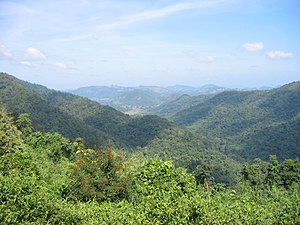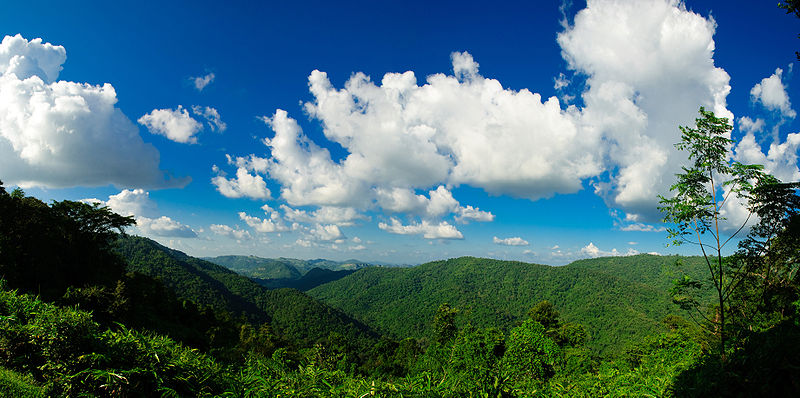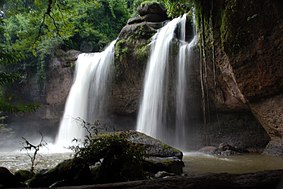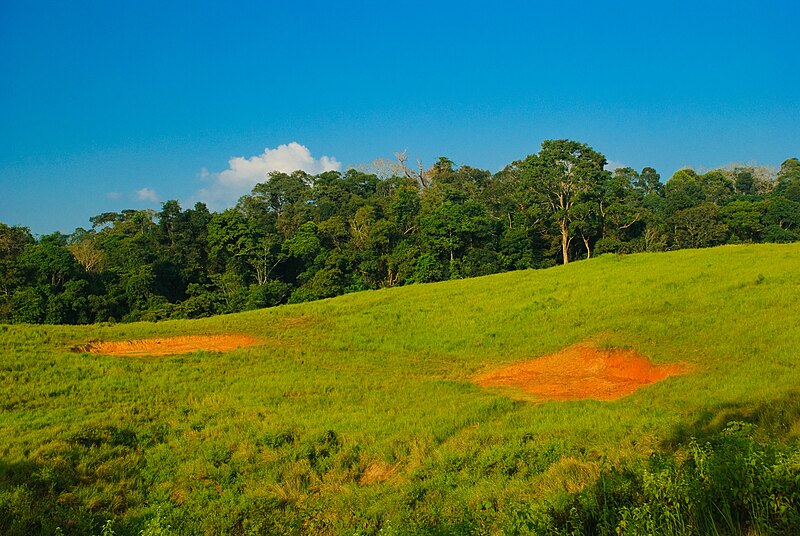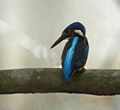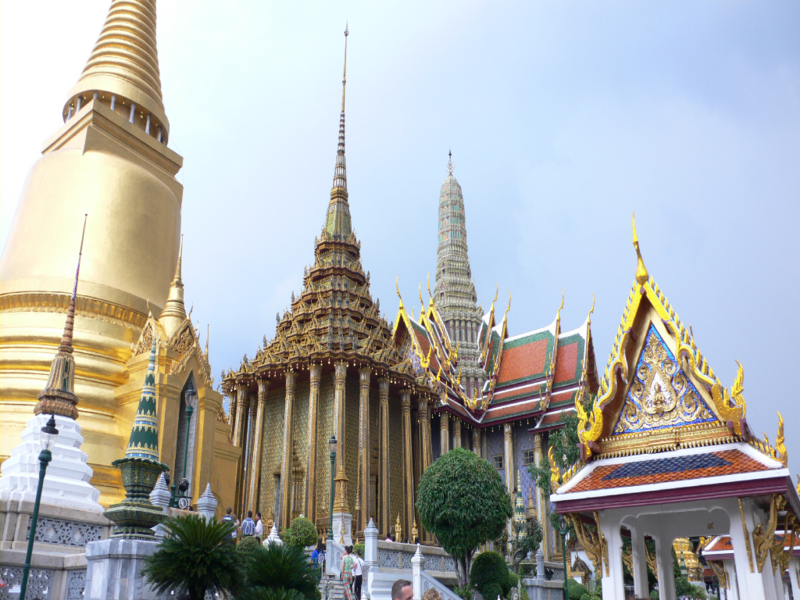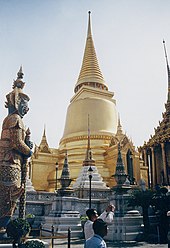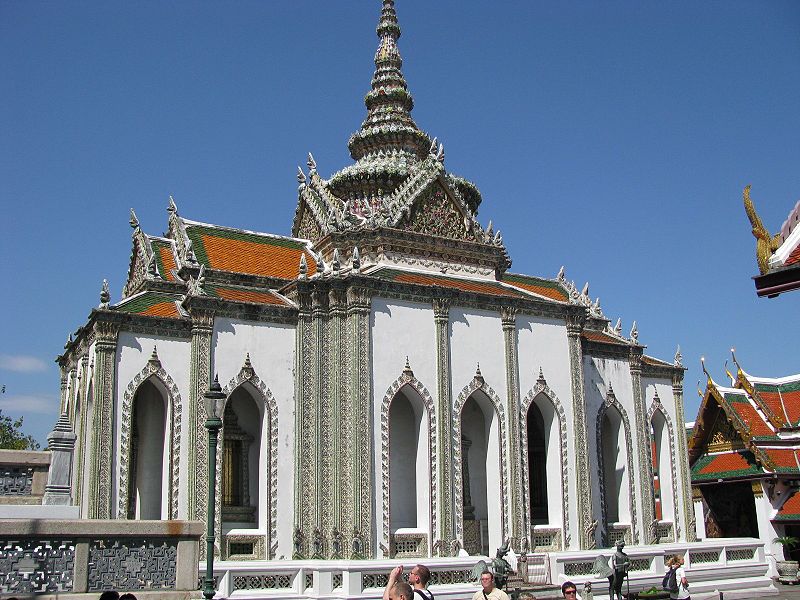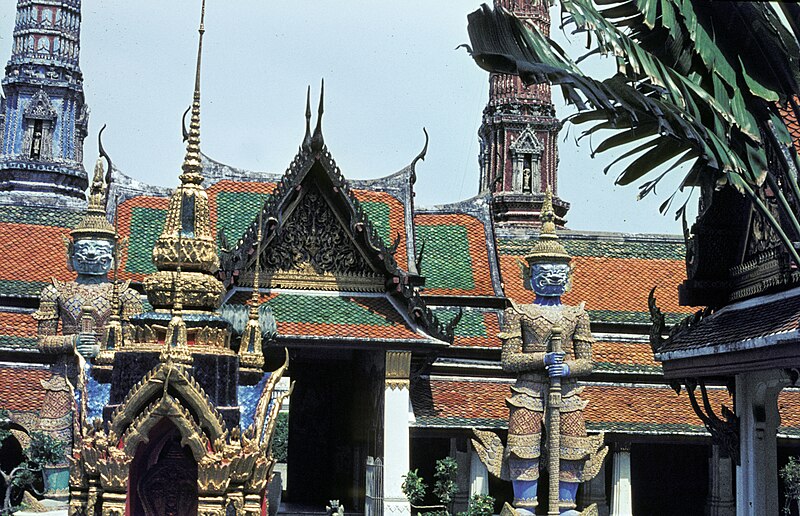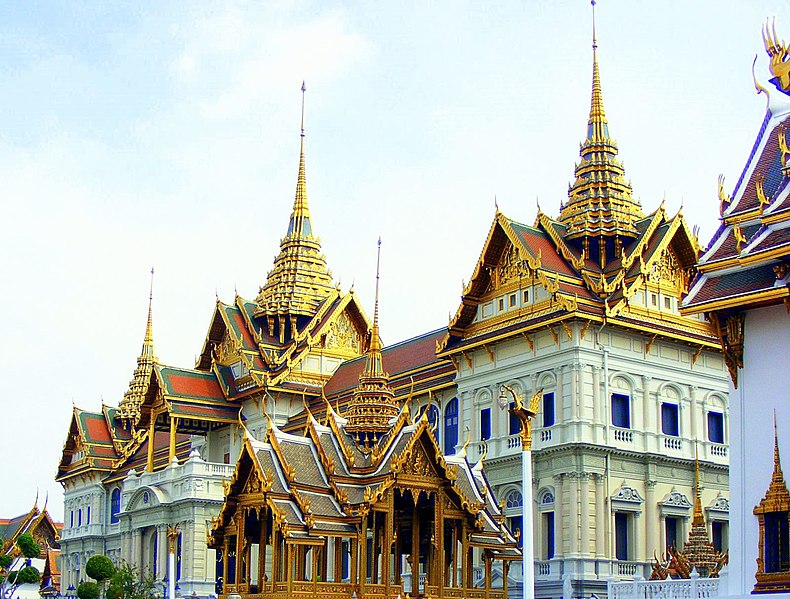The Similan Islands (Thai: หมู่เกาะสิมิลัน) is a group of islands in the Andaman Sea off the coast of Phang Nga Province, southern Thailand. It is a national park which was established in 1982. It is considered the best place in Thailand for divers.
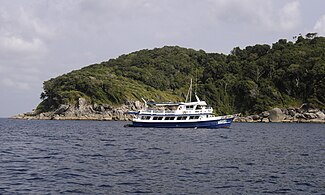 Similan Islands National Park was established after a one-year exploration by the forestry department. The park is an archipelago consisting of nine islands named Ko Bon, Ko Bayu, Ko Similan, Ko Payu, Ko Miang (two adjoining islands), Ko Payan, Ko Payang, and Ko Huyong. Recently, the park was expanded to included two remote islands named Ko Bon and Ko Tachai. The Similans are situated 70 kilometres from Phang Nga town. "Similan" is a Yawi word which means "nine". Similan is one of the most famous diving sites in Thailand, and noted as one of the top ten dive destinations according to the National Geographic Society.
Similan Islands National Park was established after a one-year exploration by the forestry department. The park is an archipelago consisting of nine islands named Ko Bon, Ko Bayu, Ko Similan, Ko Payu, Ko Miang (two adjoining islands), Ko Payan, Ko Payang, and Ko Huyong. Recently, the park was expanded to included two remote islands named Ko Bon and Ko Tachai. The Similans are situated 70 kilometres from Phang Nga town. "Similan" is a Yawi word which means "nine". Similan is one of the most famous diving sites in Thailand, and noted as one of the top ten dive destinations according to the National Geographic Society.The islands were created by upwellings of hot magma during the Tertiary-Cretaceous period some 65 million years ago, then smoothed by glacial ice and the erosion by the sea. The coral reefs are about 5000 years old and hence the oldest in Thailand. In 1982, the national park was established and now it is scheduled to become a UNESCO World Heritage Site.
Koh Similan is the largest island. There are a total of 9 islands. The sea in the area has an average depth of 60 feet. Underwater it is full of rock formations and coral reefs in several shapes and forms, resembling such things as deer, leaves, brains, and mushrooms.
Above the water are found many diverse species such as the Nicobar Pigeon, Mangrove Monitor Lizards and more.
Koh Huyong
Koh Huyong has the longest and widest beach in the park. However, the park prohibits any tourists from landing on the island as the beach a place where turtles come to lay their eggs.
Dive Sites
The Similan national park is famous for its dive sites. It has typically two different kinds of diving. East side diving consists of gently sloping coral reefs with sandy patches and the occasional boulder in between. The west side is known for its huge underwater granite boulders with numerous swimthroughs. Maybe the most famous east side dive site is East of Eden, off Island number 7. Elephant head rock is arguably the most famous west side dive site with a maze of swimthroughs and the reputation for spin-cycle like currents running in every direction.
Elephant head rock was named by Horst Hinrichs from Germany in the mid 70s, founder of one of the oldest dive shops in Phuket, Santana Diving. Other popular dive sites include North Point, Deep Six, Boulder City and the awesome pinnacles off Koh Bon and Koh Tachai.
The most important of all dive sites in the Similans, which is actually part of Surin National Park, is Richelieu Rock, famous for its incomparable variety and abundance of marine life. Whale shark sightings are not uncommon here.
However, since 1999, its once most beautiful dive site, the Fantasy Reef, has been closed from all diving activities after its condition had significantly deteriorated. Park chiefs officially blame diving for the deterioration, while dive operators in the area claim that fishing boats, with or without permission, enter the national park during low season, when no dive operators are allowed in the national park. The national park also claims that the dive site suffered significant damage from the tsunami in 2004, and continues to keep the reef closed. Since noone but the national park staff is allowed to dive Fantasy Reef it has been impossible to confirm that statement.
 The nine granite islands are postcard perfect images of paradise, covered in tropical jungle and equipped with beaches of chalk-white sand. As if this was not enough, the views under the water surface are even more impressive - this is the best dive site in Thailand. Skin-Diver Magazine has acclaimed the Similans to be one of the ten most beautiful places in the world.
The nine granite islands are postcard perfect images of paradise, covered in tropical jungle and equipped with beaches of chalk-white sand. As if this was not enough, the views under the water surface are even more impressive - this is the best dive site in Thailand. Skin-Diver Magazine has acclaimed the Similans to be one of the ten most beautiful places in the world.There is an enormous diversity in species - both in fish and corals. The visibility is the best you will find in Thailand. You will see plenty of colorful fish such as lionfish and clownfish (Nemo), and if you're lucky you may spot a bigger one like a manta or even a whale shark.
Wildlife Protection
Islands 1, 2 and 3 are closed for public due to turtle hatching protection program and reef conservation efforts. Island number 3 belongs to HM the Thai Princess. Fishing is banned in Similan and Surin National Park, however fishing boats are constantly seen in and around the Park. When diving, one can often find nets stuck to reefs and illegal fishing traps.
This season many illegal fishing traps have been found outside the most common dive sites, suggesting the fishermen are betting on divers not venturing off the known dive sites. They have contained among others Giant Trevallies, Batfish, Barracudas, Golden Pilot Jacks, Giant Triggerfish etc. The fishing traps seem to be overly abundant around Koh Bon and Koh Ta Chai.
 Public awareness of this increasing problem will be the only way to change the situation so if you visit Similan and Surin National Parks and witness illegal fishing, please report your sightings. Public pressure and fear of lost revenue will eventually force the authorities to lean on the Rangers to actually do what they are supposed to do - protect the most beautiful and famous island group and dive sites in Thailand.
Public awareness of this increasing problem will be the only way to change the situation so if you visit Similan and Surin National Parks and witness illegal fishing, please report your sightings. Public pressure and fear of lost revenue will eventually force the authorities to lean on the Rangers to actually do what they are supposed to do - protect the most beautiful and famous island group and dive sites in Thailand.Access to the Similan Islands is easiest from Khao Lak, Phang Nga province. The mainland office is in Thap Lamu. Boats depart daily from November-May. The trip takes three hours each way on slow boats or 70 minutes via speedboat.
During the months November-May also live-aboard boats head to the Similan Islands. These dive boats depart and return from Khao Lak, Phuket and Ranong and stay for several days at the Similan National Marine Park.
High season in the Similans is from December until April, when the monsoon stays far away. The best period to visit is March, when the winds are calm and the water clear. The national park is closed from May 16 to November 15.
.jpg/800px-Similanpano(smial).jpg)







.jpg/800px-Koh_Lipe_as_seen_from_Koh_Adang_top_(2007-03-362).jpg)
.jpg/800px-Ao_Sunset,_Koh_Lipe_(2007-03-321).jpg)
.jpg/800px-West_side_of_Koh_Tarutao_(2007-03-585).jpg)
.jpg/800px-Beach_of_Koh_Tarutao_(2007-03-450).jpg)

